Who Does the Bride Give Her Bouquet To? Unveiling the Charming Tradition
Deciding who receives the wedding bouquet is a moment steeped in tradition and personal significance. During a wedding ceremony, the bride typically carries a bouquet down the aisle, its design often carefully chosen to complement the wedding theme and to symbolize her feelings and intentions. Once at the altar, it’s customary for the bride to hand the bouquet to the maid of honor or a bridesmaid before exchanging vows.
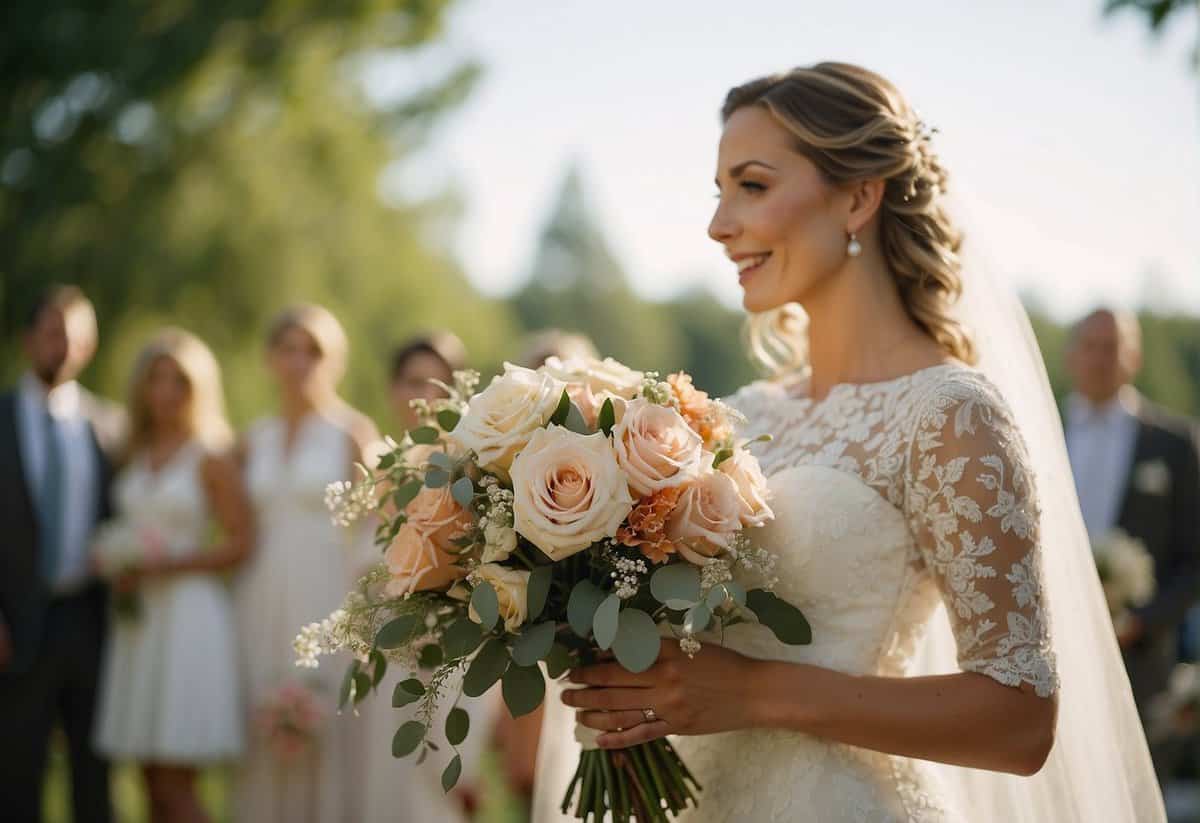
The origins of this tradition are rich and varied, but it ultimately boils down to a gesture of love and appreciation. At modern weddings, the bride might also choose to honor a particular family member or friend with her bouquet, sometimes as part of the bouquet toss tradition or in a more personal and intimate exchange. This decision can be a beautiful way to acknowledge someone special in the bride’s life, and it adds a heartfelt touch to the ceremony.
Key Takeaways
- The wedding bouquet is symbolic and its recipient is often chosen with care.
- The bouquet is traditionally handed to the maid of honor or a bridesmaid during the ceremony.
- The bride may also give her bouquet to a loved one, creating a memorable moment.
The Bouquet Toss Tradition

You’re likely familiar with the image of a bride tossing her bouquet to a crowd of excited single women at her reception. This long-standing tradition is not only a moment of fun and anticipation but also steeped in history and symbolism.
Historical Significance
Historically, the bouquet toss is believed to spread fortune and luck. Stemming from 19th century England, the act of catching the bouquet was thought to bring you closer to your own love story. Originally, the bridesmaids and single women at the wedding would try to obtain a piece of the bride’s attire or the bouquet itself, an act believed to transfer some of the bride’s luck and fortune to them.
Modern Interpretations
Today, the bouquet toss is viewed as a playful part of the wedding ceremony. The traditional toss has evolved into a moment of excitement during the reception, where single women gather with the hope that catching the bouquet will mean they’re the next to marry. It’s less about actual belief in impending love or luck and more about the fun and tradition of the event. While some choose to forgo this practice, for others it remains an integral part of a joyous reception celebration.
Choosing the Recipient of the Bouquet
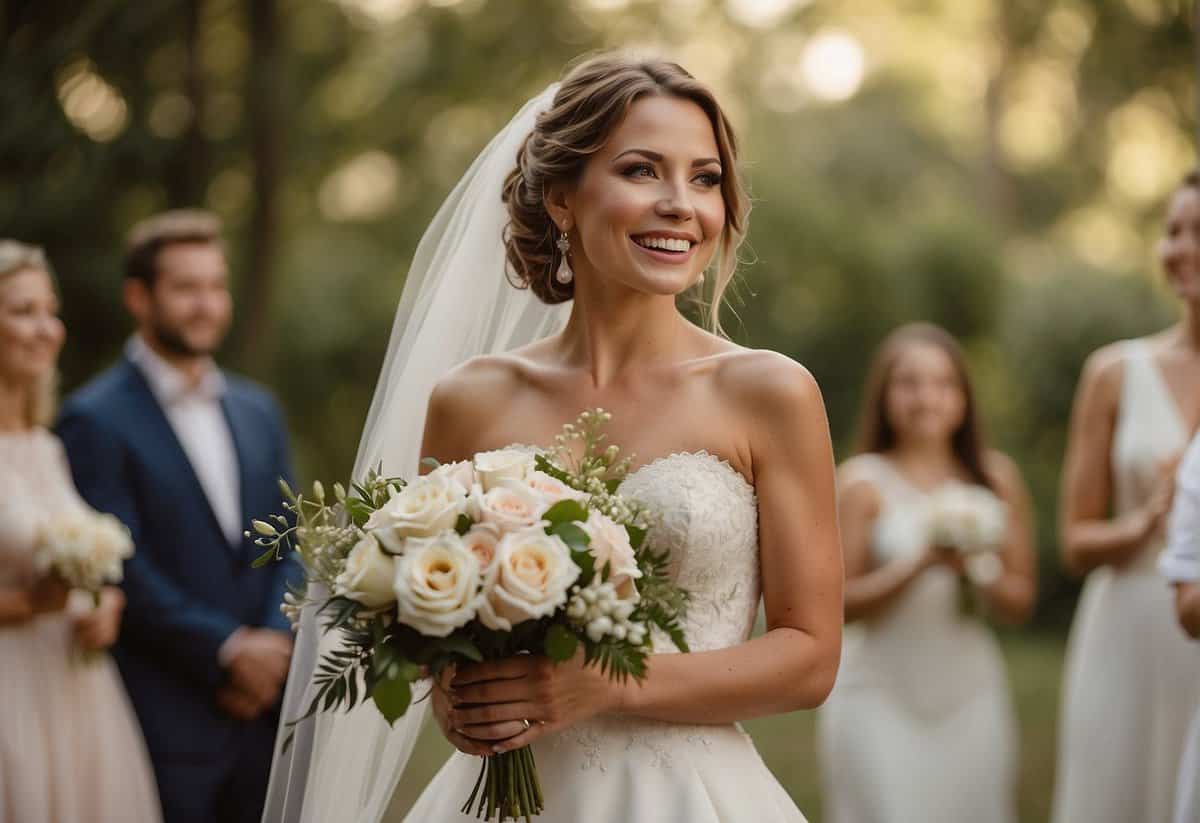
When it comes to selecting who gets the honor of receiving your bouquet, think of it as a personal expression of appreciation. Often, brides choose their maid of honor for this role, acknowledging her support and friendship throughout the wedding planning process. In this case, it’s more than just flowers; it’s a symbol of affection and a thank you for being a part of your big day.
However, your options don’t end there. You might opt to gift the bouquet to a close friend or a family member who has had a significant impact on your life. It’s a gesture that can signify your bond and the love you share. Here’s a concise breakdown:
- Maid of Honor: Traditionally receives the bouquet during the ceremony for safekeeping.
- Special Friend/Family: A meaningful alternative recipient of your bouquet.
- Loved Pet: If you have a beloved pet, they can be ceremonially involved too.
Remember, whatever your choice, it reflects your own personal story and feelings. The underlying message is that whoever receives your bouquet is someone associated with good fortune and luck in your life. So, as you make your decision, consider who has brought you joy, support, and love. Your wedding is a celebration of these values after all, and the bouquet is a small, yet significant, emblem of this celebration.
Design and Symbolism of the Bouquet
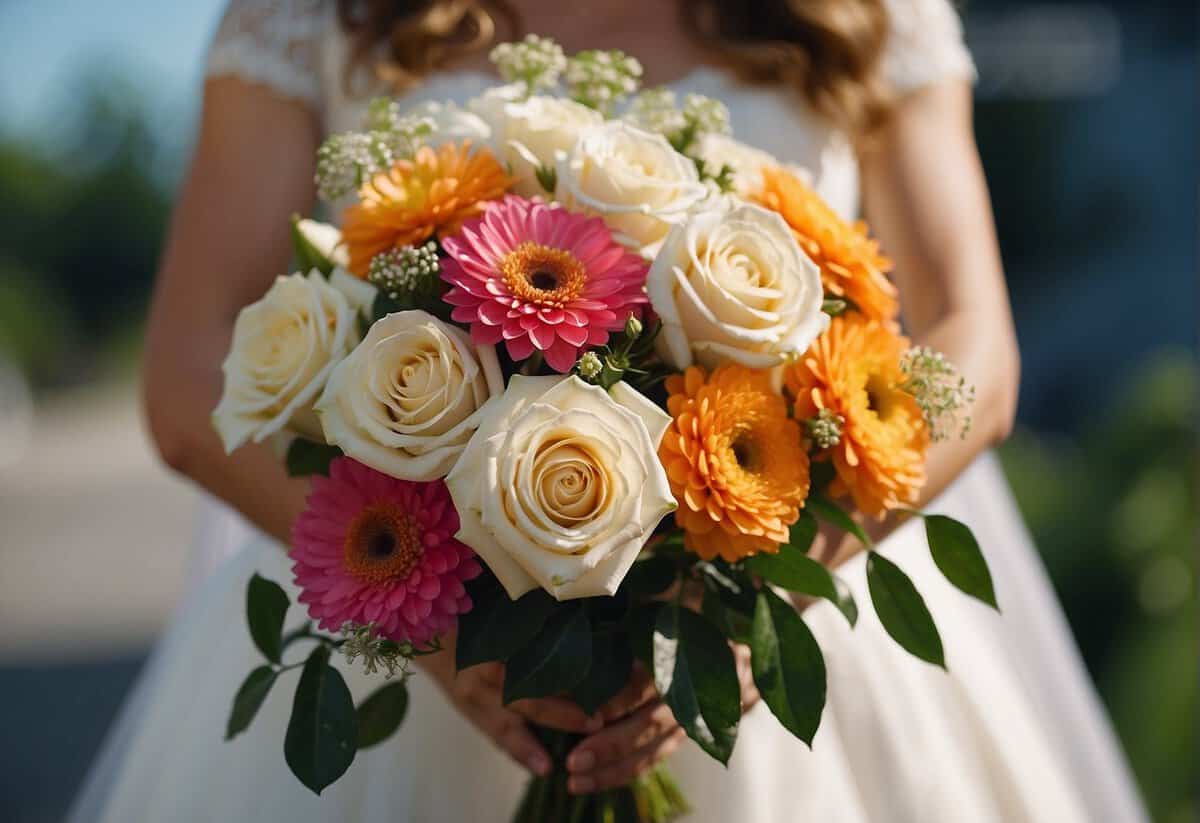
When you’re selecting your wedding bouquet, the design and style are reflections of your personal taste and the essence of your wedding day. Each element, from the flowers chosen to the way they are arranged, contributes to the symbolism and meaning behind your bouquet.
Traditionally, brides opt for floral arrangements that not only complement their attire but also align with the traditions of marriage and fertility. For example, roses are a popular choice, symbolizing love and beauty, while lilies might be chosen for their association with purity and innocence.
- Popular flower choices and their meanings:
- Roses: Love, joy, and beauty.
- Lilies: Purity and innocence.
- Peonies: Good luck and prosperity.
In terms of design, the florist will work with you to create a bouquet that suits your style, whether that’s an elegant cascade or a simple hand-tied posy. The colors and textures also play a role in the overall aesthetic, so consider what each bloom might represent on your special day.
- Texture and color significances:
- White: Purity and new beginnings.
- Red: Passion and deep love.
- Pastels: Softness and femininity.
Additionally, including certain flowers can bring symbolisms of good luck and happiness in your marriage, a tradition that dates back to ancient times. Incorporating something such as sprigs of lavender is thought to bring good fortune and ward off evil spirits.
Your wedding bouquet is more than just a collection of flowers; it’s a symbol of your love story and the future you’re stepping into. Your choices can echo the traditions that mean the most to you as a bride and as part of a new union in marriage.
Alternatives to the Bouquet Toss
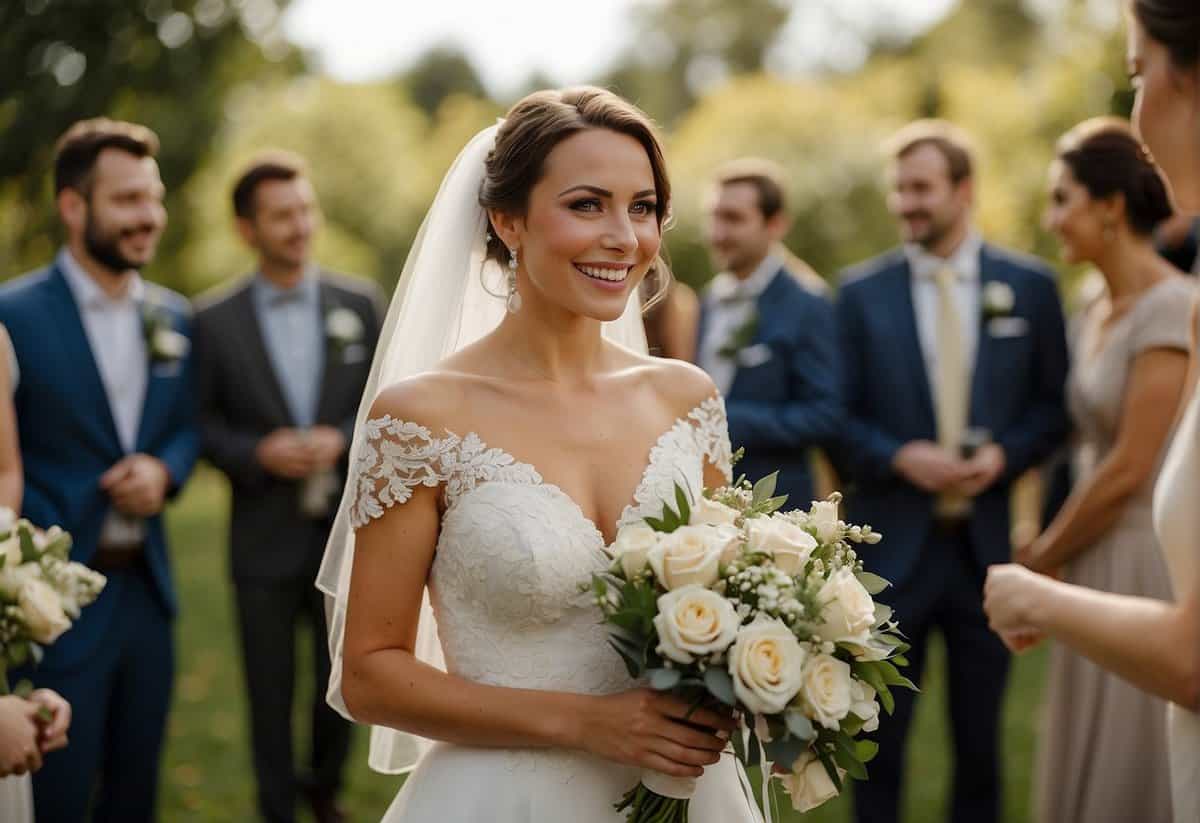
When planning your wedding, you might want to blend tradition with modernity, and this includes rethinking the bouquet toss at your reception. If you’re looking for inclusive and innovative ways to handle this tradition, you’re in luck!
Anniversary Dance: A heartfelt alternative is the anniversary dance. Couples married the longest are celebrated, and the one with the most years under their belt receives your bouquet as a keepsake.
Ribbon Cutting: Get creative with a ribbon cutting ceremony. Attach multiple ribbons to your bouquet, giving everyone a chance to hold one. Then, cut the ribbons one by one— the last ribbon holder gets the bouquet!
Charitable Donation: Modern celebrations can encompass generosity by opting to donate the equivalent cost of your bouquet to a charity of your choice, in honor of a guest or the last couple dancing.
Plush Toy Toss: For a good-hearted twist, you can choose to toss a plush toy instead of your bouquet. The lucky catcher might be inspired to adopt a furry friend, turning a fun moment into a life-changing gesture.
Remember, your wedding is a reflection of you and your partner’s unique story. There’s no need to stick strictly to tradition. Whether you prefer a more understated approach or a gesture that extends the joy beyond your special day, these alternatives offer meaningful ways to involve your guests during your ceremony or reception without the pressures of a traditional toss.
Frequently Asked Questions
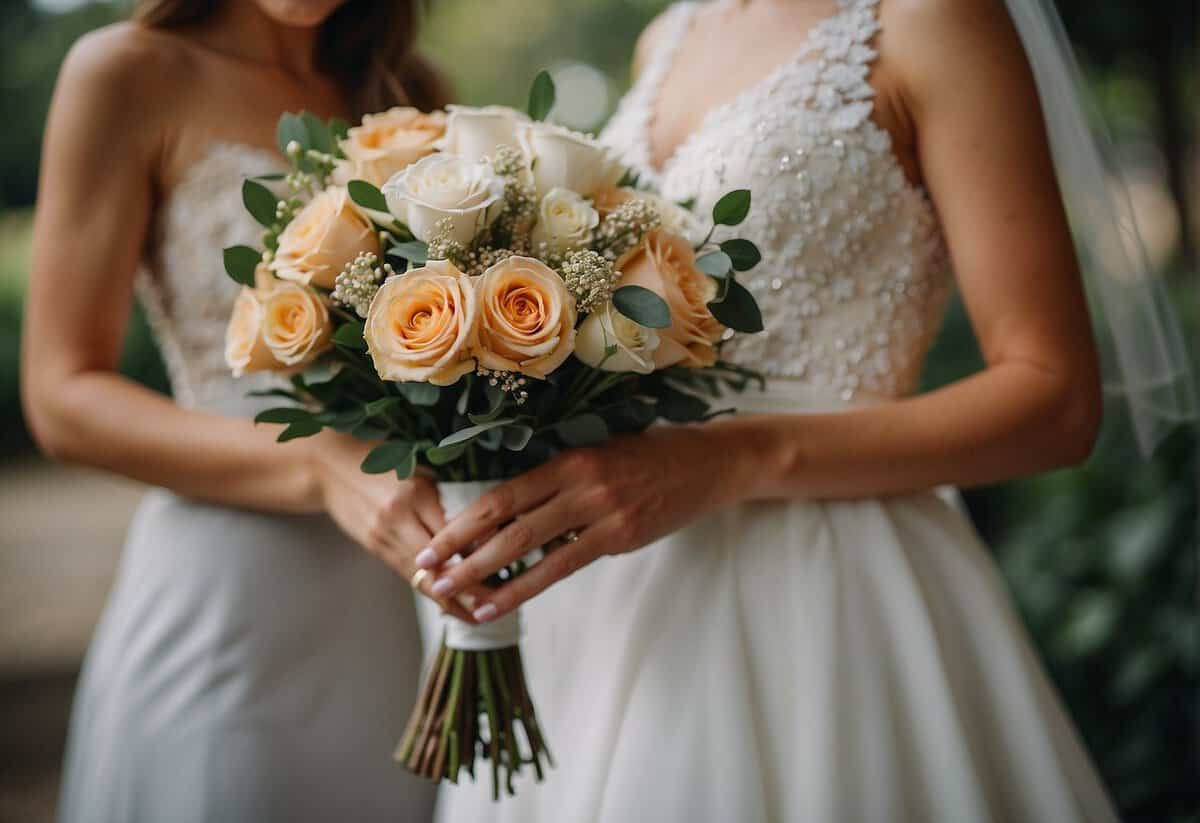
If you’re involved in the planning of a wedding or preparing for your own, you might have some questions about the floral traditions, particularly regarding the bride’s bouquet. Here, we address common inquiries to help you navigate these customs with ease.
How should the bride carry her bouquet when walking down the aisle?
When walking down the aisle, the bride typically holds her bouquet at hip level with both hands. This poised and comfortable position allows for the best display of the bouquet and doesn’t obstruct the view of the bride’s dress.
What are the traditional roles for distributing boutonnieres and corsages?
Traditionally, the groom’s boutonniere is often provided by the bride as a symbol of her love. The groomsmen, fathers, and grandfathers also receive boutonnieres, while mothers and grandmothers typically wear corsages. The distribution is usually handled by the wedding planner, a family member, or the florist.
What is the etiquette for who should receive flowers at a wedding?
Wedding flower etiquette suggests that all members of the bridal party, including bridesmaids and groomsmen, should receive flowers. The close family members, such as parents and grandparents, are also typically honored with personal flowers like corsages and boutonnieres.
Is there a specific person the bride hands her bouquet to during the ceremony?
During the ceremony, it is common for the bride to hand her bouquet to the maid of honor just before the vows. The maid of honor then holds onto the bouquet until after the first kiss.
After the wedding ceremony, what happens to the bride’s bouquet typically?
After the ceremony, the bride’s bouquet often becomes part of the reception décor or is prepared for preservation. Some brides may choose to toss their bouquet to unmarried guests, continuing the tradition that symbolizes the transfer of luck and love.
Who is generally responsible for the cost of the bridal bouquet?
Typically, the cost of the bridal bouquet is covered by the bride’s family. However, as wedding traditions evolve, the couple may choose to handle these costs together as part of their overall wedding budget.
